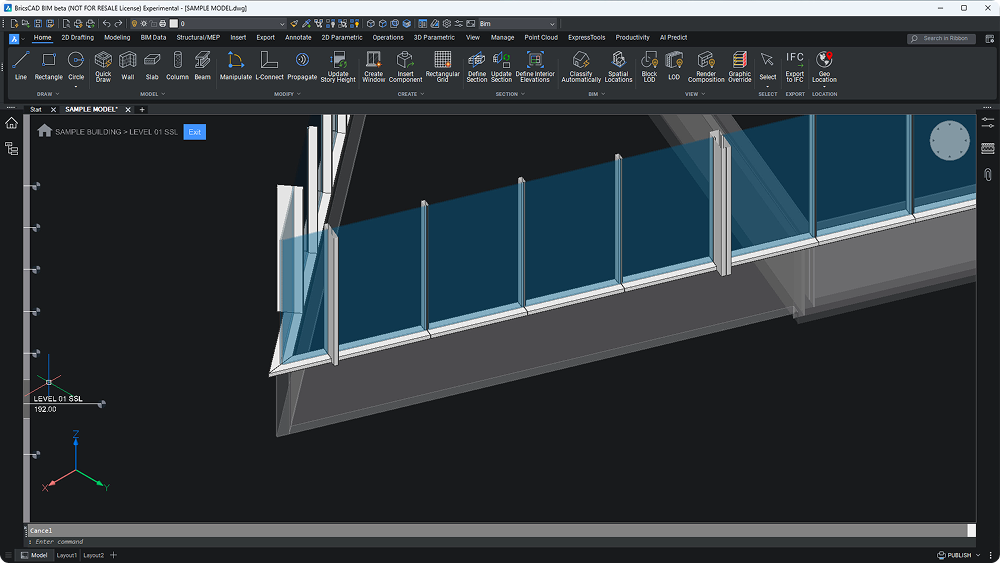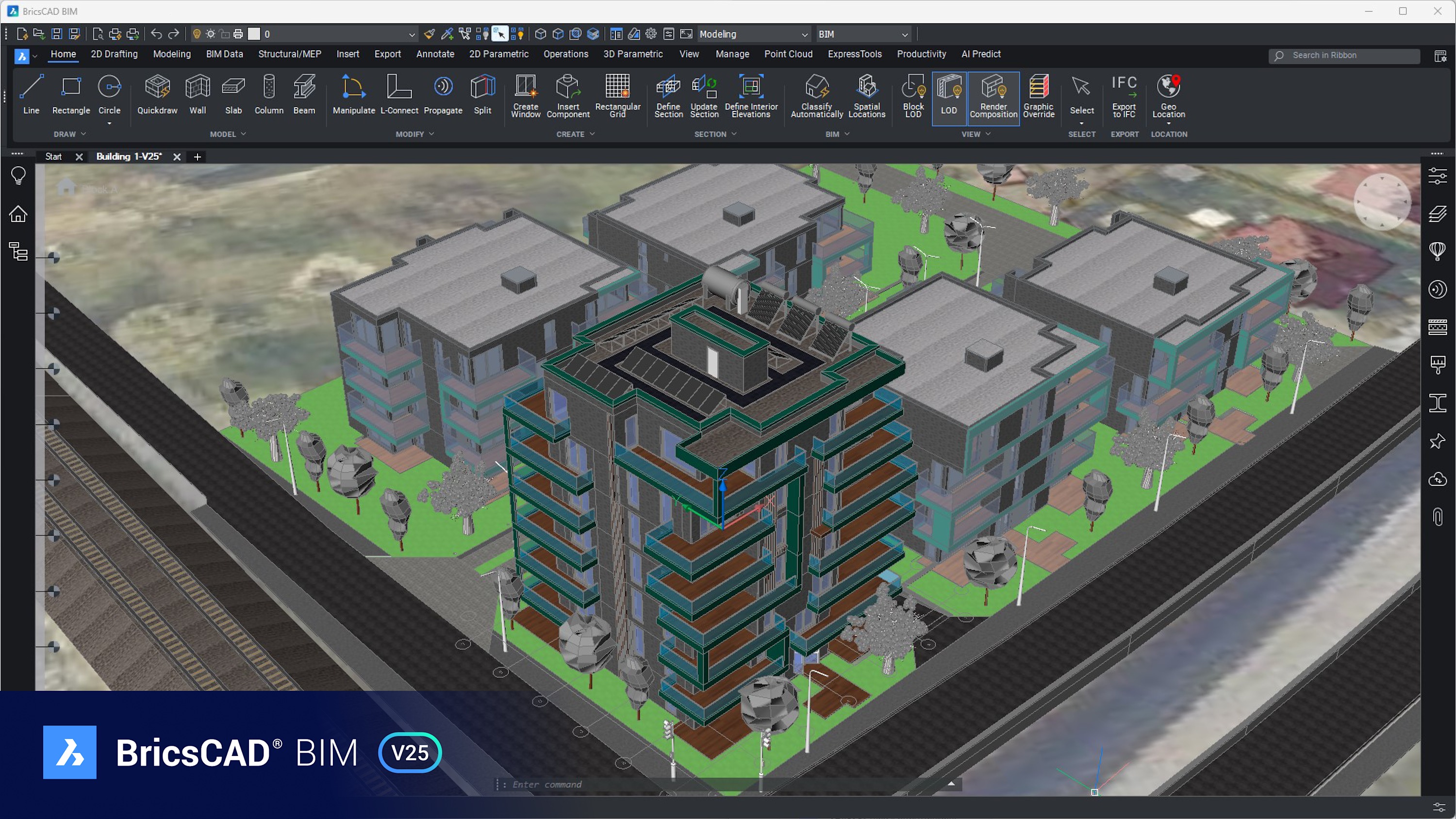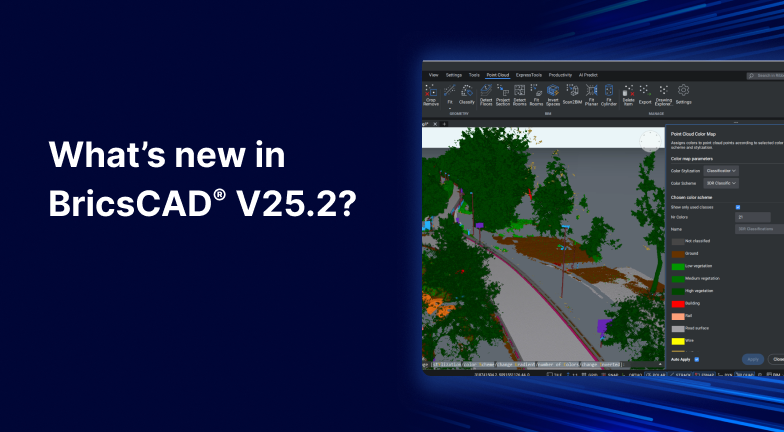The Information Delivery Specification (IDS), developed by buildingSMART, is a standardized framework designed to address this need. And now, with the implementation of IDS XML into BricsCAD BIM, users gain a powerful tool for automating compliance and aligning deliverables with project requirements.
The Role of LOD and LOI in Construction Projects

LOD focuses on the geometric fidelity of BIM models, detailing the progression from basic conceptual representations to precise, fabrication-ready models. It ensures that what is visually represented aligns with the stage of the project lifecycle:
LOD 100: Generic placeholders suitable for conceptual planning.
LOD 200: Approximate geometry with basic spatial relationships and quantities for initial coordination.
LOD 300: Detailed design with accurate geometry for clash detection.
LOD 350: Includes connections and interfaces between building elements for detailed coordination.
LOD 400: Fabrication-level details for construction workflows.
LOD 500: As-built models for operational use.
In contrast, LOI pertains to the informational richness associated with these models. LOI encompasses non-geometric data, such as material specifications, performance attributes, and maintenance schedules. This metadata provides the actionable insights needed for decision-making throughout a project’s lifecycle.
Together, LOD and LOI complement each other, ensuring that models deliver both the visual accuracy and informational depth required to meet project demands. Yet, without proper management, these elements risk becoming sources of inefficiency.
Level of Information Need (LOIN) and ISO 7817
LOIN is a concept that integrates both the graphical and informational aspects of BIM data, ensuring that teams deliver exactly what is required—no more, no less—at each stage of a project. To support this structured approach, the international standard ISO 7817 provides a comprehensive framework for defining and managing the LOIN.

ISO 7817 distinguishes between three key categories of information:
Geometric Information (LOD): The level of graphical or spatial detail required to visually and accurately represent building elements.
Alphanumeric Information (LOI): The data-rich attributes associated with building components—such as material properties, performance metrics, or classification systems.
Documentation Need: The accompanying files or records that supplement the model, such as certificates, specifications, operation manuals—and standardized deliverables like the IDS by buildingSMART. As a machine-readable document that defines precise information requirements, the IDS serves as structured documentation used to validate BIM content and ensure alignment with LOIN as defined in ISO 7817.
By structuring BIM data around these components, LOIN enables consistency, precision, and efficiency across project deliverables.
The Significance of buildingSMART IDS

As a component of good LOIN, the IDS standardizes information requirements across BIM workflows. By ensuring data is structured, human-readable, and machine-interpretable, an IDS allows for automated compliance checking and aligns project information with project requirements. This enhances both efficiency and accountability. It addresses the critical question: What information needs to be delivered, when, and in what format? By defining precise data requirements, the IDS complements LOIN, ensuring purposeful and streamlined information exchanges.
Compliance and Interoperability
With BricsCAD BIM’s native DWG capabilities and robust IFC export tools, users can navigate varying levels of BIM adoption. BricsCAD BIM also supports the buildingSMART IDS XML format, making it an invaluable tool for delivering both 2D drawings and 3D models that comply with project requirements.
In an industry where tight margins and increasing mandates demand precision and efficiency, BricsCAD BIM equips professionals with a tool to confidently deliver on project requirements. Its support for LOIN alignment using the IDS XML ensures a competitive advantage while meeting the growing requirements for information-richness in drawings and BIM assets.
Discover BricsCAD® BIM
You can try BricsCAD BIM for free, for 30 days and discover how you can meet project requirements and ensure compliance.





